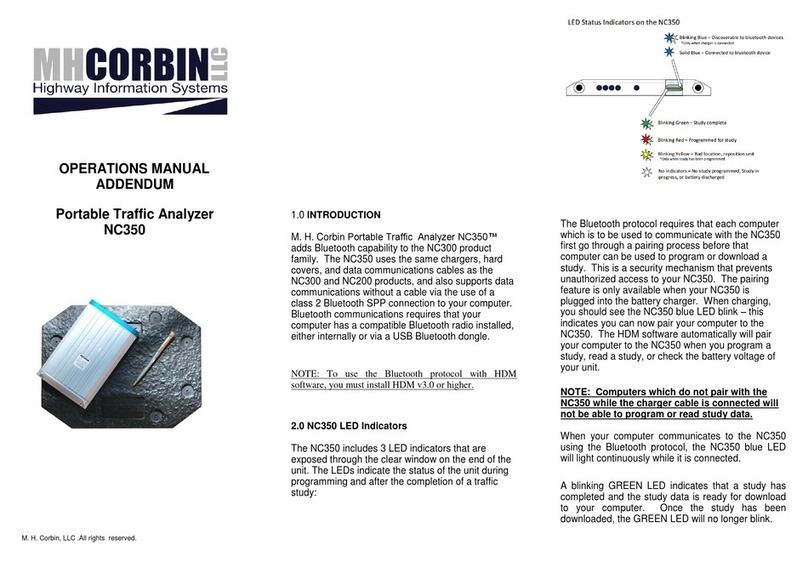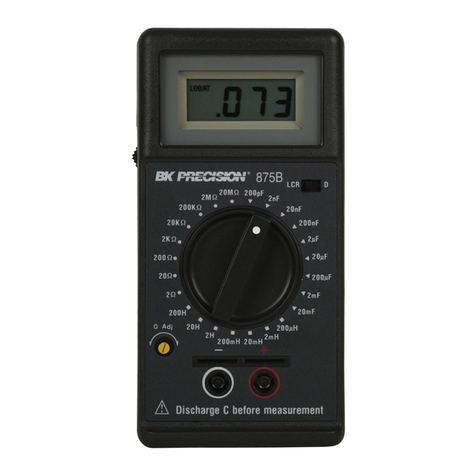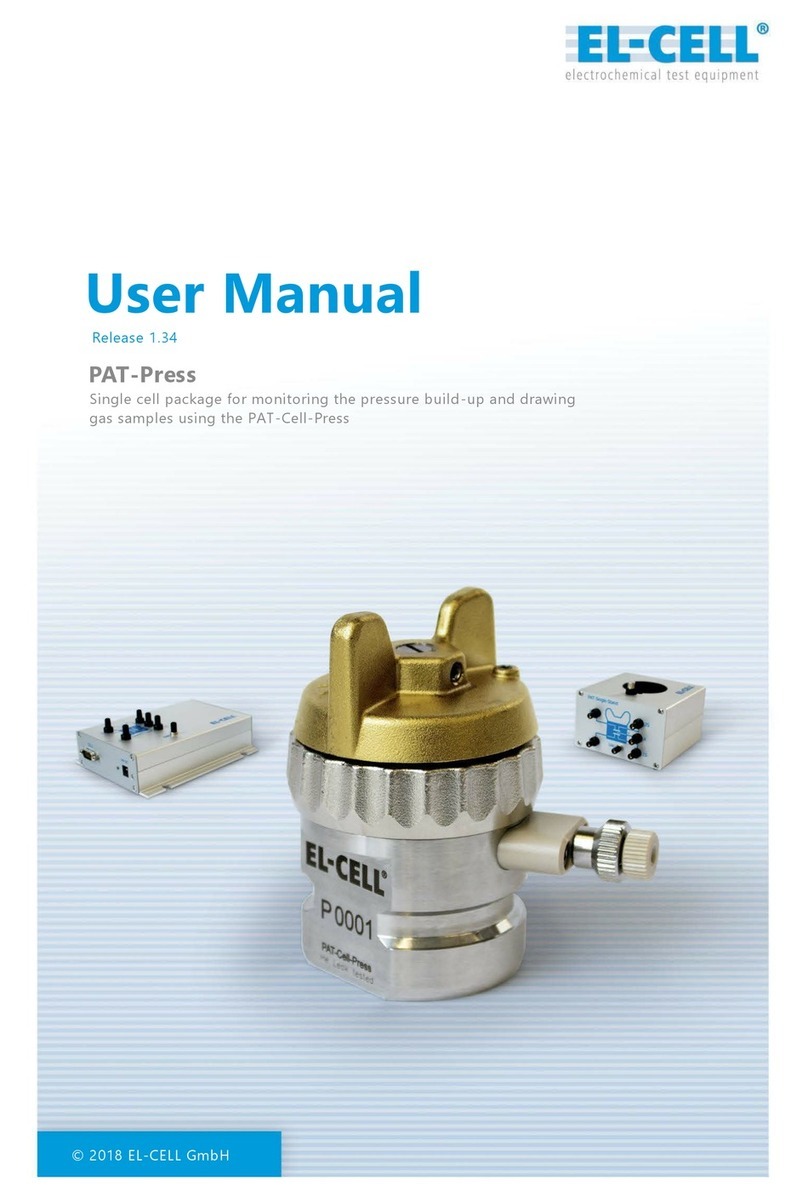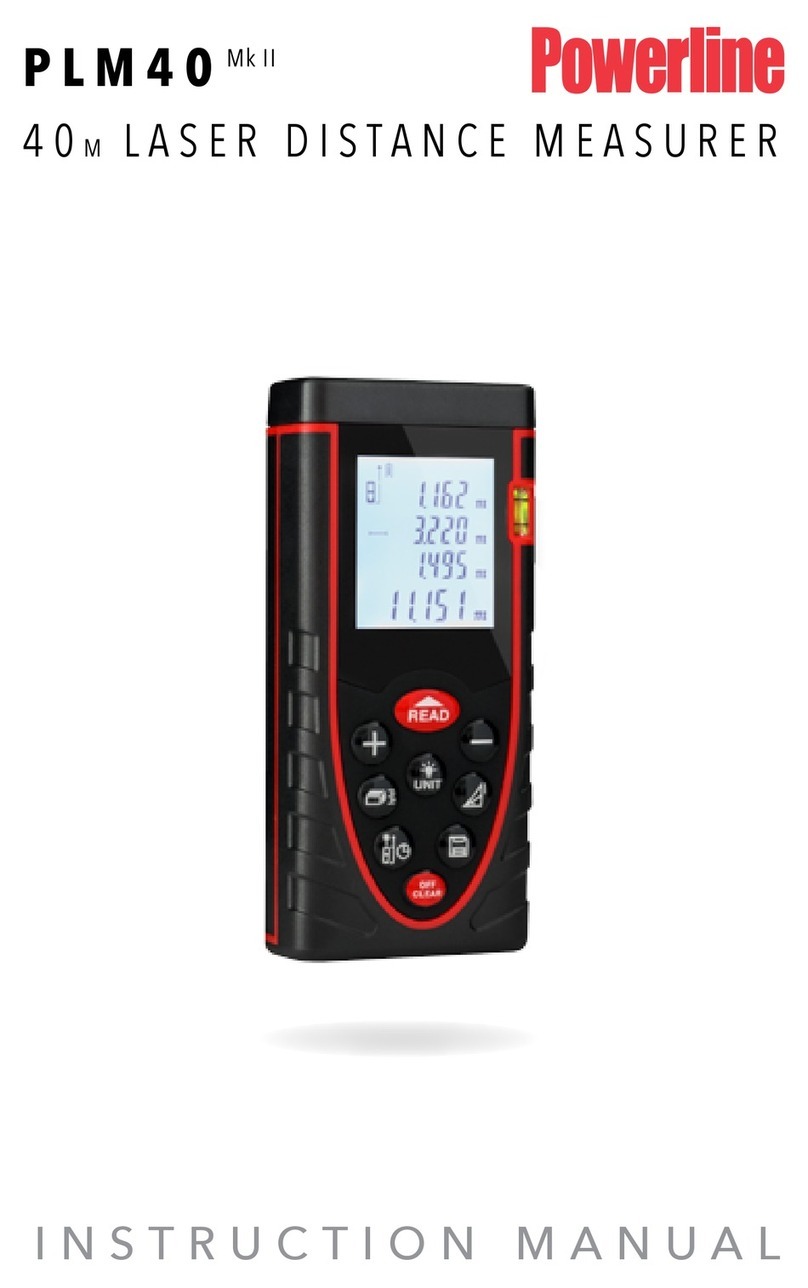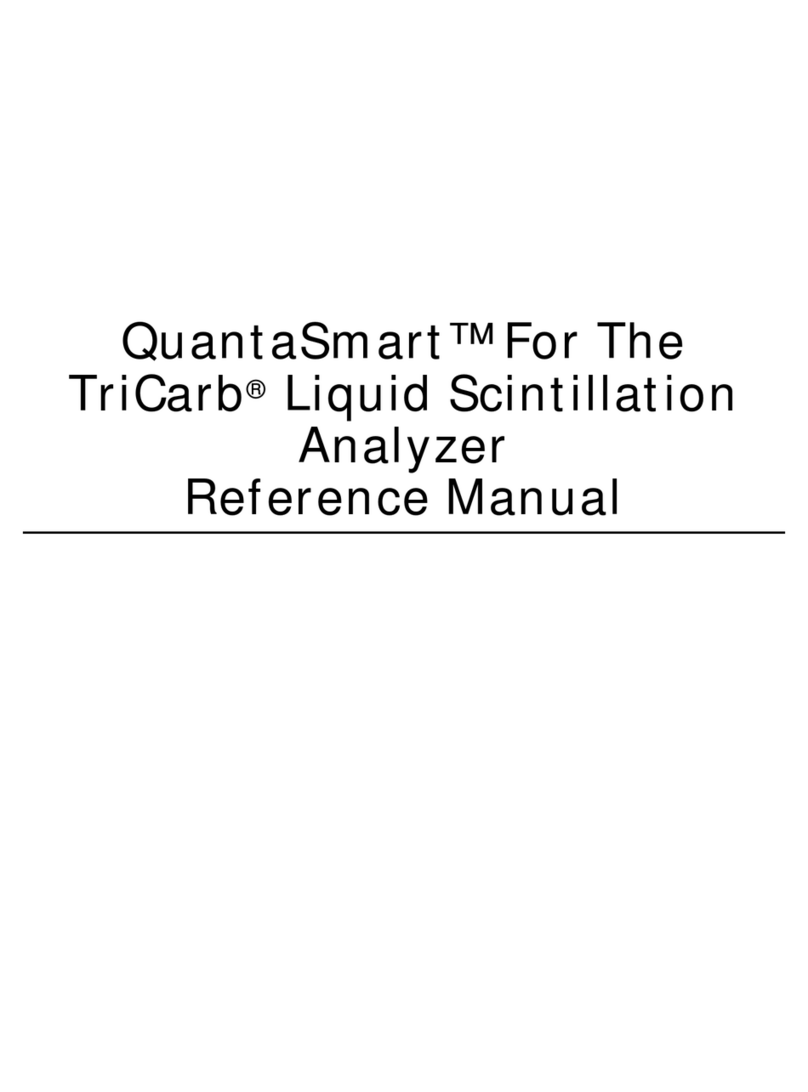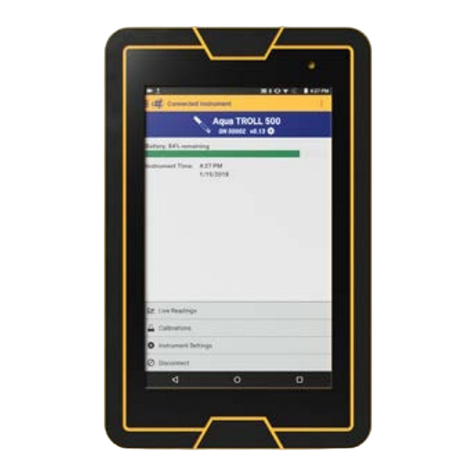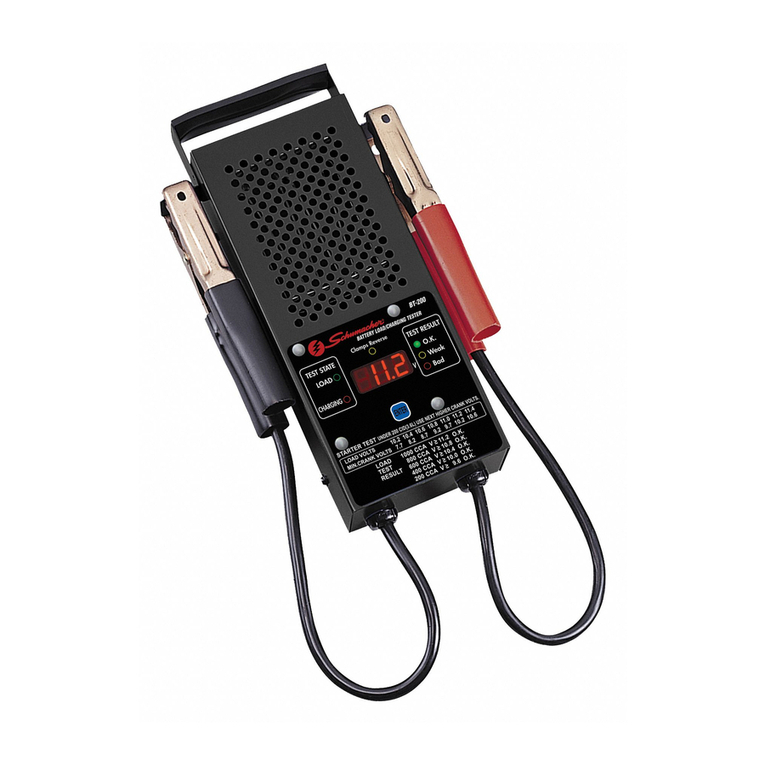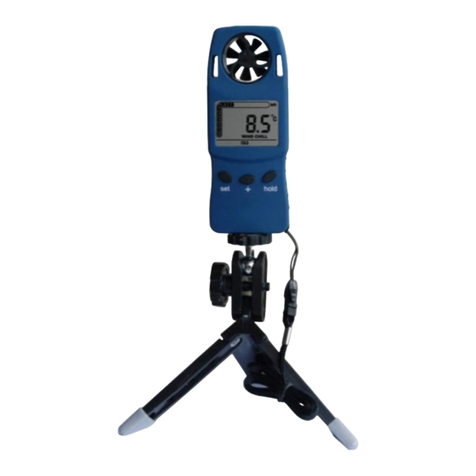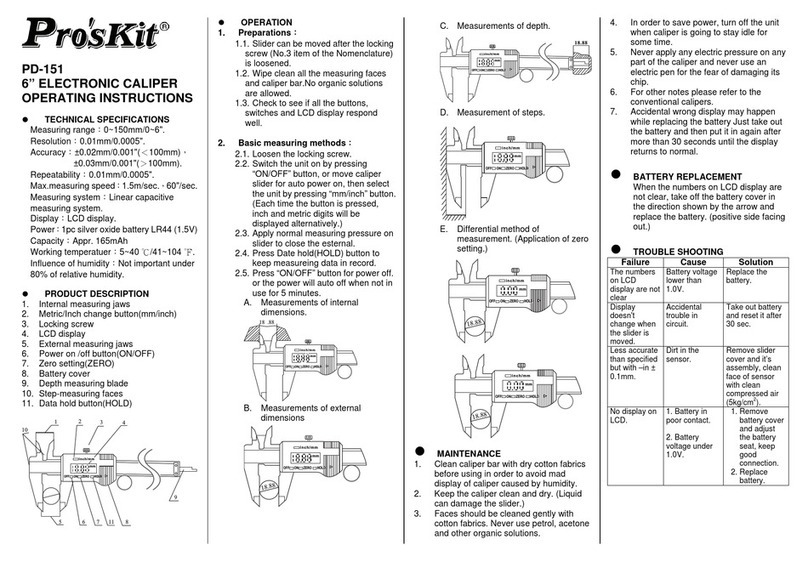MH Corbin NS-50 User manual


PUBLISHED BY
M.H. Corbin, LLC. Phone: 614-873-5216
8355 Rausch Drive Fax: 614-873-8095
Plain City, Ohio 43064
Visit our website at www.mhcorbin.com.
© M.H. Corbin, LLC. 2016
No part of this manual may be reproduced in any form or by any means, electronic or
mechanical (including photocopying), nor may its contents be communicated to a third
party without prior written permission of the copyright holder.
The contents are subject to change without prior notice.
Please observe that this manual does not create any legally binding obligations for M.H.
Corbin, LLC. towards the customer or end user. All legally binding commitments and
agreements are included exclusively in the applicable supply contract or Conditions of Sale.


Table of Contents
CHAPTER 1
GENERAL INFORMATION ............................................................................5
About This Manual....................................................................5
Contents of This Manual........................................................5
Trademarks ...............................................................................6
License Agreement ..................................................................6
Warranty ....................................................................................7
CHAPTER 2
PRODUCT OVERVIEW..................................................................................8
Product Nomenclature.............................................................8
Distance Measuring Instrument (DMI) Theory of Operation 8
Automatic Error Correction (AEC)..........................................9
CHAPTER 3
INSTALLATION............................................................................................10
Mounting the NiteStar ............................................................10
Mounting the Terminal Block - CAUTION! ..........................10
Wiring the NiteStar - CAUTION!..........................................11
CHAPTER 4
KEY DESCRIPTIONS...................................................................................13
CHAPTER 5
CALIBRATION..............................................................................................15
Pre-Calibration Procedure.....................................................15
Instrument Calibration ...........................................................15
Calibration Summary (Automatic) ........................................17
Calibration Summary (Manual)..............................................18
CHAPTER 6
MEMORY ......................................................................................................19
Storing Events to Memory.....................................................19
Recalling Events from Memory.............................................21
Memory Store Summary ........................................................22
Store Memory Locations........................................................22
Changing Memory Output Format ........................................22
Memory Recall Summary.......................................................24

M.H. CORBIN, LLC. ________________________________________________________________ 3
CHAPTER 7
SURVEY DATA MANAGEMENT SOFTWARE (SDM)................................25
CHAPTER 8
PERIODIC DISTANCE INTERVAL (PDI).....................................................26
PDI Wiring ...............................................................................26
TTL PDI Connection...............................................................26
TTL PDI Wiring........................................................................27
Setting PDI Distance ..............................................................27
Setting PDI Duration (Time)...................................................28
Setting PDI Duration (Distance)............................................28
Setting the Type of PDI..........................................................29
Low Going High......................................................................29
High Going High.....................................................................30
Flip Flop (PDI Output) ............................................................30
Advanced PDI Uses................................................................31
Set Count Increment ..............................................................31
Set Count Pre-Distance .........................................................31
Summary PDI Keys ................................................................32
PDI Count Use ........................................................................32
CHAPTER 9
EMERGENCY 9-1-1 PROGRAM .................................................................33
Set Count Increment ..............................................................33
Set Count Pre-Distance .........................................................34
CHAPTER 10
AUXILIARY PROGRAMS ............................................................................35
Self Test (PRM 1)....................................................................36
Speed Trap (PRM 6) ...............................................................36
Begin / End (PRM15) (NS-60 Only)........................................37
CHAPTER 11
CALCULATION PROGRAMS......................................................................38
Area Calculation (PRM 10) ....................................................38
Volume Calculation (PRM 11) ...............................................39
Cost Calculation (PRM 12).....................................................39
Tonnage Calculation (PRM 13) .............................................41
Tonnage Cost (PRM 14).........................................................41
Time-Speed-Delay (TSD) –(PRM 30)....................................42
Time-Speed-Delay Use...........................................................42
Time-Speed-Delay Limits.......................................................43

CHAPTER 12
SERIAL INPUT / OUTPUT ...........................................................................44
Data Formats...........................................................................44
Serial Connector.....................................................................44
Serial Operation......................................................................44
Baud Rate Setting...................................................................45
CHAPTER 13
HYPERTERMINAL GUIDE...........................................................................46
HyperTerminal Serial Commands.........................................46
HyperTerminal Setup .............................................................47
Using HyperTerminal .............................................................50
CHAPTER 14
TROUBLESHOOTING..................................................................................52
Determining the Problem.......................................................52
Instrument is operational but will not count........................53
Technical Support and Product Returns .............................53
CHAPTER 15
TECHNICAL DATA ......................................................................................54
Specifications .........................................................................54

M.H. CORBIN, LLC. ________________________________________________________________ 5
CHAPTER 1
GENERAL INFORMATION
This chapter provides general notes for the manual and the NiteStar NS-50 and the NS-60.
About This Manual
This manual provides information for installing, operating, and maintaining
M.H. Corbin, LLC. Nu-Metrics NiteStar Distance Measuring Instruments
models NS-50 and NS-60.
Contents of This Manual
This manual consists of the following chapters:
- Chapter 1, General Information, provides general notes for the manual
and the NiteStar NS-50 and the NS-60.
- Chapter 2, Product Overview, introduces the features, advantages, and the
product nomenclature.
- Chapter 3, Installation, covers installation, wiring, and mounting of the
DMI hardware.
- Chapter 4, Key Descriptions, describes the key functions available on the
DMI unit.
- Chapter 5, Calibration, covers the calibration steps to perform to make
your DMI ready to use.
- Chapter 6, Memory, describes how to store and recall events and
distances.
- Chapter 7, Survey Data Management Software (SDM), describes basic
and GPS functionality provided by the software package.
- Chapter 8, Periodic Distance Interval (PDI), discusses the uses and setup
of this functionality.

- Chapter 9, Emergency 9-1-1 Program, describes the setup for recording
E-911 house numbering data.
- Chapter 10, Auxiliary Programs, describes specialized functions available
on the DMI.
- Chapter 11, Calculation Programs, specialized calculations with the
distance currently displayed on the DMI.
- Chapter 12, Serial Input / Output, describes serial I/O settings for the
DMI.
- Chapter 13, Hyperterminal Guide, provides a quick reference on using the
Windows HyperTerminal program with the NS-60.
- Chapter 14, Troubleshooting, provides basic troubleshooting tips.
- For technical questions or product returns, contact M.H. Corbin, LLC. at
1-877-257-7755. Provide the following supporting information and request either
service or product return:
Name and model of the product in question
Serial number of the product
Name and location of the installation site
Name and contact information of a technically competent person who can
provide further information on the problem.
Make, model, and year of vehicle.
Chapter 15, Technical Data, provides the technical specifications for the NS-
50 and NS-60.
Trademarks
Nu-Metrics LLC. Trademark is a registered trademark of M.H. Corbin, LLC.
.
License Agreement
All rights to any software are held by M.H. Corbin, LLC. or third parties.
The customer is allowed to use the software only to the extent that is
provided by the applicable supply contract or Software License Agreement.

M.H. CORBIN, LLC. ________________________________________________________________ 7
Warranty
For certain products M.H. Corbin, LLC. gives a limited one-year warranty.
Please observe that any such warranty may not be valid in case of damage
due to normal wear and tear, exceptional operating conditions, negligent
handling or installation, or unauthorized modifications. Please see the
applicable supply contract or Conditions of Sale for details of the warranty
for each product.

CHAPTER 2
PRODUCT OVERVIEW
The M.H. Corbin, LLC. Nu-Metrics NiteStar Distance Measuring Instrument is available in two
models; the NS-50 and the NS-60. Both models are easy-to-use distance measuring instruments
(DMI) that facilitate land measurements from the convenience of your automobile. The NS-50
includes features required for most basic surveys and applications.
The NS-60 includes all of the features of the NS-50 with the addition of a RS-232 Serial Port for
connection of a laptop computer to conduct a complete highway survey.
Product Nomenclature
Table 1 M.H. Corbin, LLC. Nu-Metrics Distance Measuring
Instrument Nomenclature
Code
Common Name
NS-50
NiteStar DMI NS-50
NS-60
NiteStar DMI NS-60
Distance Measuring Instrument (DMI) Theory of
Operation
For electronic measurement of distance; a proximity sensor, mechanical transmission sensor or
electronic interface adapter is used to provide speed pulses to the NiteStar DMI for distance
measurements. How the DMI calculates distance is relatively simple for each of the sensors.
The proximity sensor divides the vehicle tire into pie sections by equally spaced targets attached
to the rim. The spacing distance between each target projects the proportional distance of the
outer circumference of the tire. For illustrative purposes, assume a 15 inch tire has an average
rolling circumference of 7.16 feet. The distance between targets is representative of one eighth of
the circumference, which in this example is 0.895 feet. This sensor can also be mounted to make
use of the drive shaft of a vehicle and positioned to read the knuckles of the u-joint or a target(s)
attached to the u-joint or the drive shaft.

M.H. CORBIN, LLC. ________________________________________________________________ 9
The transmission sensor transmits six pulses for each revolution of the internal disk. Since most
automobile speedometers are based on 1000 revolutions per mile, approximately 6000 pulses per
mile are obtained. Dividing the pulses received (6000) into the course length (5,280 feet) shows
that each pulse represents 0.880 feet (5,280 divided by 6,000 = 0.880).
The electronic interface amplifier takes pulses already generated by the vehicle’s existing speed
sensor and conditions this signal. Most vehicle sensors generate more pulses than the DMI needs
so the electronic interface includes a divider circuit. This circuit changes the 100,000 pulse/mile
vehicle sensor pulse output to the 6,000 per mile required by the DMI.
Automatic Error Correction (AEC)
AEC is a software generated program that uses velocity and time calculations to help compensate
for errors from the sensor equipment. This is accomplished by constantly comparing the duration
of one sensor pulse to a subsequent pulse. When a pulse is missed, AEC will flash and the DMI
will correct the count. The AEC will flash constantly on the left-hand side of the distance screen
when sporadic pulses are received, indicating that a problem exists and must be corrected.

CHAPTER 3
INSTALLATION
NOTE: You may want to locate a garage or speedometer shop in your area to perform the
installation of the sensor and DMI instrument.
Mounting the NiteStar
The NiteStar is designed to be mounted using the supplied bracket or self-adhesive Velcro®strip
fasteners that are provided for direct mount. Determine the location where you will mount the
DMI in the vehicle. This will assist in determining how to route the power cable for the unit. The
DMI should be angled so the operator is able to see the display and keyboard. Remove the self-
adhesive protective covering from one of the Velcro fastener strips. Place the sticky side down at
the location where you are locating the DMI. Remove the self-adhesive protective covering from
the matching strip and press firmly to the back of the DMI. Mount the DMI to the first strip. If
using the bracket, repeat the above procedures and fasten the DMI to the bracket before following
the remaining steps.
WARNING: Do not mount a NiteStar in any area that may block the driver's view or cause other
obstructions.
Mounting the Terminal Block - CAUTION!
All wiring and materials should be installed and routed as far away as possible from spark plug
wires, ignition coil wire, manifold and exhaust pipes. (Use the cable ties supplied with your
Installation Kit to secure wires away from these areas.)
Using the #6-32 screws from the installation kit, mount the terminal block and electronic
interface (if used) under the instrument panel near the driver’s seat. The fender well inside the
engine compartment on the driver’s side is an optional mounting location. If using the proximity
sensor or mechanical transmission sensor, follow the directions provided with the sensor. Insert
the DMI wiring harness into the power socket on the DMI. Route the wire lug end of the wiring
harness (telephone cable) from the DMI location to the terminal block. Wire the cable to the
terminal block as shown in the drawing.

M.H. CORBIN, LLC. _______________________________________________________________ 11
WARNING: Safety goggles and protective clothing should be worn at all times when working
on or near the vehicle battery or the associated battery cables.
Wiring the NiteStar - CAUTION!
Failure to connect the power and ground wires directly to the battery may cause engine noise to
interfere with the operation of the DMI. Be sure to connect power and ground wires directly to
the battery terminals.
Connect the Red (power) and Black (ground) wires to the terminal block as shown.
Connect the other end of the Black (ground) wire to the negative terminal of the battery. Remove
the fuse and connect the red (power) wire to the positive terminal of the battery.
NOTE: DO NOT INSERT FUSE UNTIL INSTALLATION IS COMPLETE AND UNIT IS
READY TO BE POWERED UP.
Depending on the terminal block location selected, either the wiring harness from the DMI or the
power cable from the battery will need to be routed through the vehicle firewall. Usually this can
be through an existing rubber grommet. This could be where the speedometer cable or other
wiring passes from the passenger compartment to the engine compartment. If no existing

grommet or hole can be located, you may have to carefully (do not damage existing wiring or
items mounted on the firewall) drill a 3/8 inch hole through the firewall. If a new hole is made
you should seal the hole when finished with an electrical or waterproof putty or sealant.
Actual sensor installation instructions may differ from those shown. Follow the
installation instructions included in your sensor kit.
Use the cable ties supplied to tie off the wiring harness and power cable neatly so they do not
interfere with vehicle operator or operation. When all installation is complete, replace the fuse
and power up the unit.

M.H. CORBIN, LLC. _______________________________________________________________ 13
CHAPTER 4
KEY DESCRIPTIONS
Turns the unit ON & OFF.
Depress the button for approximately 2 seconds to turn the unit OFF.
STOPS & STARTS the COUNT. When NOT counting,
COUNT/HOLD flashes on the status display.
STOPS or freezes the display, DMI is still counting internally but the display value
is stopped so you may write it down. The words DISPLAY/HOLD will flash in the
status window when the instrument is in hold.
Depress the DISPLAY/HOLD key to resume.
Sets the distance value to ZERO.
(Same as PRINT key) : Also, marks an INTERVAL on the display. When the
DMI is counting, depressing the key will set the current distance in the display
window. The next time the key is pressed the display will show the elapsed distance
from the last mark.
Prints data to the RS-232 output and updates INTERVAL. If the RS-232 option is
available the DMI will output...
Event #
Distance
Interval
Speed <Return>
1.
12345
0
35

2.
12445
100
37
... each time MARK/ENTR or PRINT key is depressed
See Calibration Section
Changes distance units on display each time the key is pressed. Units
are: FEET, MILES and KILOMETERS.
Allows entry of a specific starting distance (pre-distance) other than 0 Feet, Miles
or KM. To set a specific starting distance, clear the DMI before entering distance,
press 3PD, enter distance, then press MARK/ENTER. The number entered can
also be added to the current distance displayed. For example, if the current distance
displayed is 100 Feet and a number of 30 is entered, then the displayed distance will
be 130 Feet.
Toggles the DMI between counting DOWN and UP. The count direction is
DOWN if the DN arrow is shown to the left of the distance. If DN is NOT shown
the unit is counting UP. NOTE: When the DMI is counting DOWN and reaches 0 it
beeps and begins counting UP again.
Press to adjust the backlight brightness level. There are three light levels and "off".
The backlight consumes power. Do not leave the backlight on when the vehicle will
not be in use for an extended period or the vehicle battery could become depleted.
( same as MARK/ENTER key)
Changes the SPEED units displayed each time the key is pressed. Units: F
Feet/Second -- Miles/Hour -- Kilos/Hour
See PDI Section
See Access to Memory Programs Section
See Memory Section
IMPORTANT: Your new NiteStar will be factory programmed with a calibration number of
1000. This value should remain in the NiteStar until the proper calibration procedure is
completed as outlined in this manual. If 1000 is not programmed in, manually type in “1000” and
press the MARK/ENTER key.

M.H. CORBIN, LLC. _______________________________________________________________ 15
CHAPTER 5
CALIBRATION
The DMI works by counting pulses that are received from the sensor. The number of pulses is
different for each vehicle, so the DMI must be calibrated for each vehicle.
The calibration number you find for your vehicle will be the number of feet the vehicle travels
between each pulse multiplied by 1000. This number should be between 400 and 1400. If the
number is outside this range the accuracy of the DMI may be adversely affected.
Pre-Calibration Procedure
1. Accurately measure a straight road course 1000’ long using a tape measure or similar device.
Mark the beginning and end with a paint mark, stake in the ground, or other fixed object.
2. Check the air pressure in the vehicle tires. Make note of the pressure and recheck each day
before beginning use of the DMI.
3. Drive the vehicle for approximately 5 miles before running the calibration course. This will
help to match the same operating temperatures that the tires will have during normal use.
Instrument Calibration
1. Insure the DMI is in the FEET unit mode. If not, depress the UNIT key until the DMI display
shows FT.
NOTE: NiteStar Calibration MUST be done in FEET mode.
2. Insure the DMI is in COUNT/HOLD mode and depress the 1 CAL key. The display will
show:

If the display is blank, enter 1000 then press MARK/ENTER to save. To return to calibration
mode, press the 1CAL key again.
IMPORTANT NOTE: The NiteStar can store up to 4 calibration numbers for 4 different
vehicles. The display will show you are working on the calibration number for car -1 and at
present it is 1000. You may step through the 4 calibration numbers by pressing the DISP/HOLD
key.
PROCEED TO THE START OF THE 1,000 FOOT COURSE.
Align a fixed point on the vehicle exactly with the marker for the beginning of the calibration
course. A piece of tape temporarily fixed to the vehicle works well as a reference for the fixed
point.
3. Press the RUN/HOLD key.
4. The display will show:
5. Depress MARK/ENTER. The display will show 0. When the vehicle moves the display will
show the pulses counted. The value displayed is a tabulation of pulses counted by the
instrument and not a distance traveled.
NOTE: The SPEED window will NOT operate at this time.

M.H. CORBIN, LLC. _______________________________________________________________ 17
6. At the end of the 1000 foot course, slow the vehicle carefully so it is exactly aligned with the
end of course marker. When the car is aligned, press the RUN/HOLD key and the number in
the display will become your calibration number for this vehicle, (this number should be
between 400 and 1400). Please write this number in the back of your manual or other
location that will stay with the vehicle.
Once you have recorded your calibration number, press MARK/ENTER and your calibration
number is stored in the DMI. The display should show the course length.
7. Make sure this value is saved by turning the NiteStar off. (Press the ON/OFF key).
8. If this is the first time you have calibrated a DMI, repeat the procedure and see if you get the
same calibration value.
Calibration Summary (Automatic)
With the instrument in COUNT/HOLD:
1CAL key -
DISP/HOLD - Change car number
RUN/HOLD - <1000’> in current units.
(Enter new course length if needed)
• MARK/ENTER -
Roll through calibration course!
• RUN/HOLD - (New cal number)
• MARK/ENTER to enter calibration number (course length is displayed)

• ON/OFF (Stores your calibration number into memory)
Calibration Summary (Manual)
To enter in a known calibration number if your vehicle has previously been calibrated.
With the instrument in COUNT/HOLD:
1CAL key -
DISP/HOLD - Change car number
Enter new calibration number (_ _ _ _ )
MARK/ENTER - Will exit calibration mode
ON/OFF (Stores your calibration number into memory)
This manual suits for next models
1
Table of contents
Other MH Corbin Measuring Instrument manuals
Popular Measuring Instrument manuals by other brands
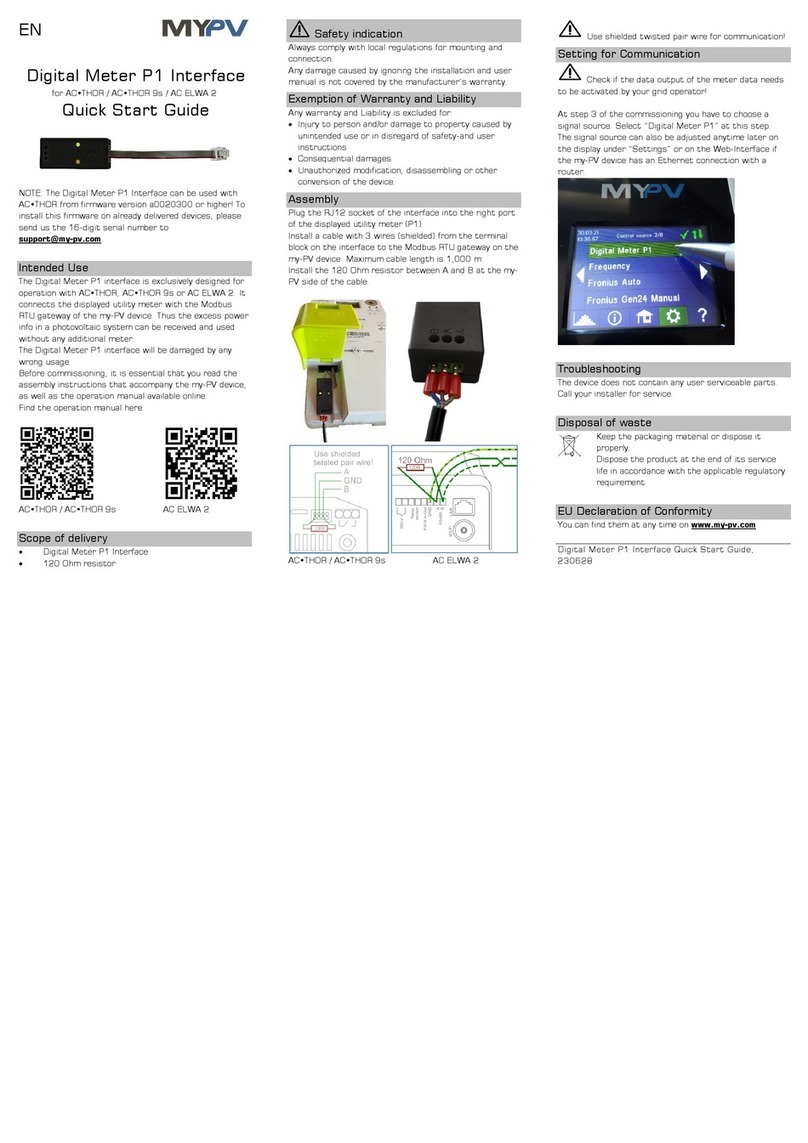
MYPV
MYPV Digital Meter P1 interface quick start guide
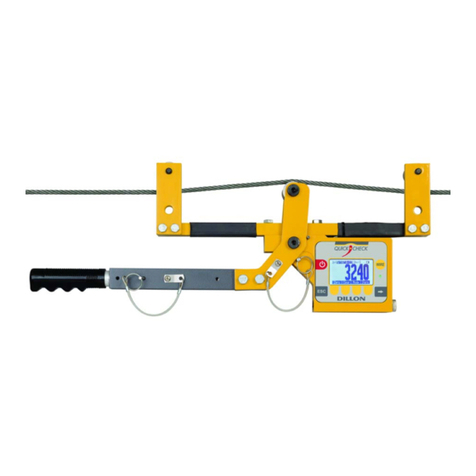
Check-line
Check-line CTM2 instruction manual
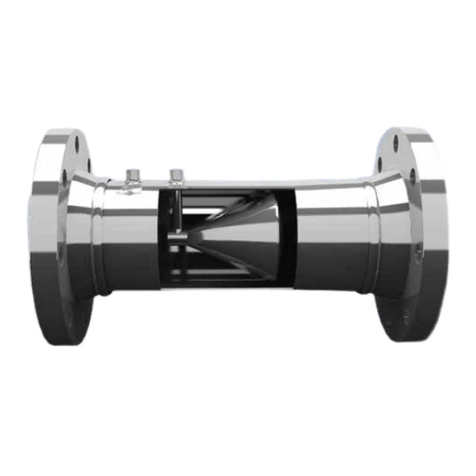
Tek-Trol
Tek-Trol TEK-DP1620A instruction manual
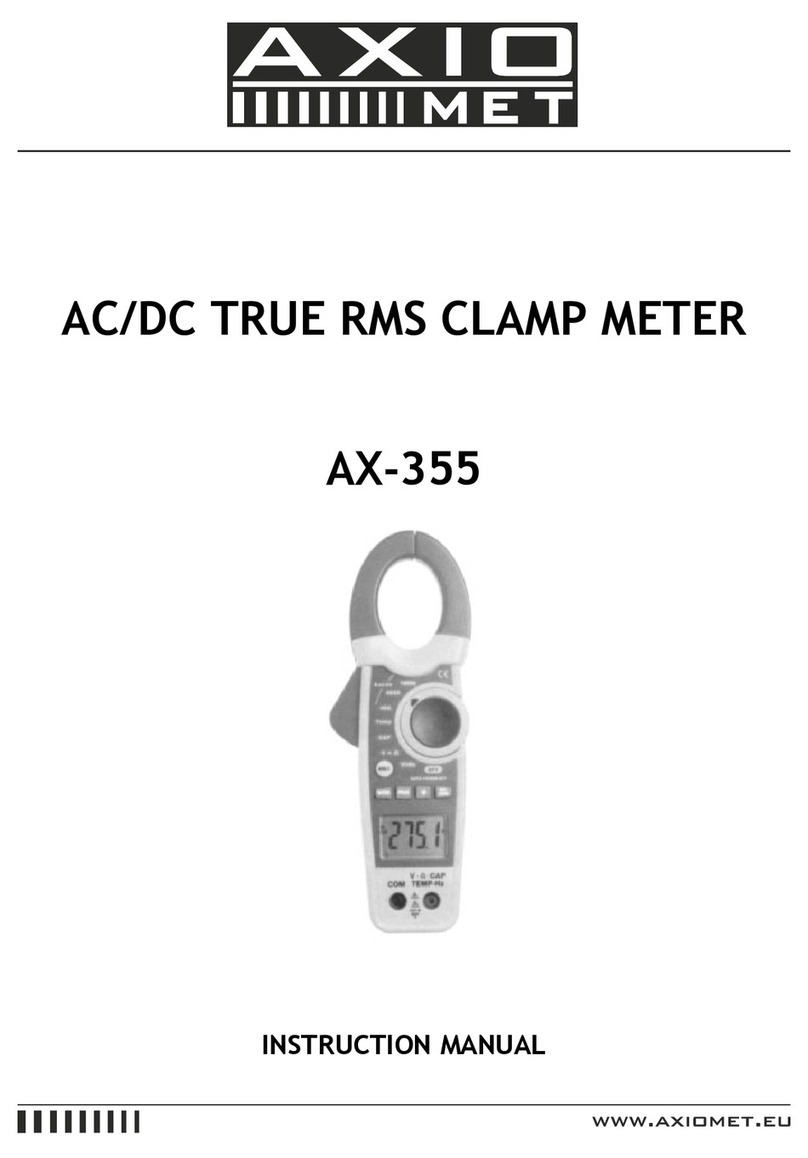
Axio MET
Axio MET AX-355 instruction manual
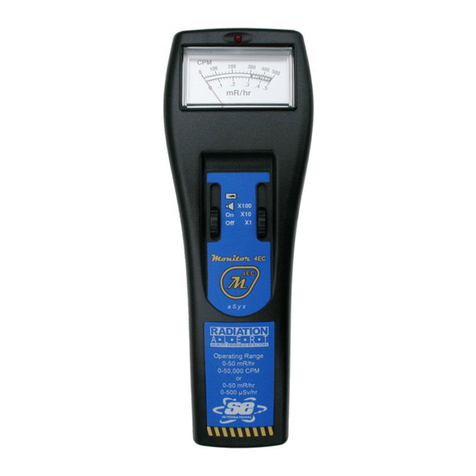
S.E. International
S.E. International MC1K quick start guide
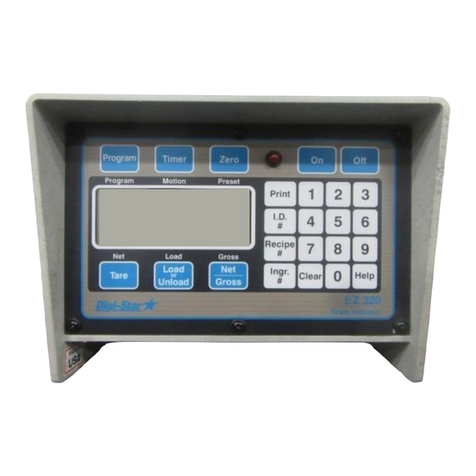
Digistar
Digistar EZ 320 Operation & installation manual
